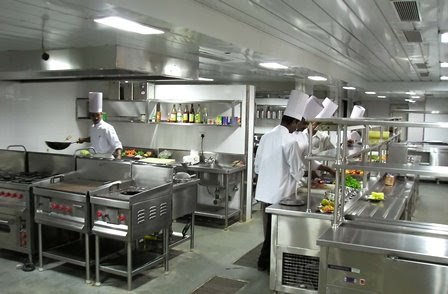According to the Environmental
Protection Agency (EPA), restaurants use about 2.5 times more energy per
square foot than other commercial buildings. Needless to say, all that energy
costs money, so investing in energy efficiency when you're planning that new restaurant construction, can mean big savings over the long haul.
Not only will taking simple steps to make your
operation more environmentally friendly reduce greenhouse gas emissions and
conserve resources, it will also have a positive impact on the bottom line.
Following are some cost-saving tips for increasing energy
efficiency in commercial kitchens. These tips, provided by the EPA, can save
thousands of dollars each year on energy bills.
Purchase Energy Star
qualified equipment
Consider the bigger picture when purchasing kitchen
appliances and equipment. Focusing on life-cycle costs rather than purchase
price can help you save big in the long run. Life-cycle cost includes the
purchase price, annual energy savings and other long-term costs associated with
the equipment. Though energy efficient appliances cost more up-front, they pay
for themselves quickly with lowered energy bills. To get the biggest bang for
your buck, request ENERGY
STAR-qualified equipment.
Implement Energy
Efficient Processes
Leaving equipment ON when it’s not being used costs money.
Implement a startup/shut down that ensures the equipment is running only when
needed.
Maintain Equipment
Regularly, Repair Equipment Immediately
Adhering to regularly scheduled maintenance programs will
ensure your equipment is running efficiently. Regular maintenance can help restaurateurs
spot potential problems in addition to avoiding repair costs and the high cost
of replacing spoiled food.
Choose the Most
Energy Efficient Cooking Method
While all cooks have their favorite cooking methods for
certain foods, consider experimenting with more energy-efficient methods. Ovens
are generally more energy efficient than rotisseries, and griddles more
efficient than broilers.
Check the Thermostats
Kitchen equipment performance changes over time. To ensure your kitchen is operating
efficiently, check thermostats and control systems on appliances,
refrigeration, dish machines and hot water heaters to see if they need to be
recalibrated or readjusted.
In addition to saving money on energy bills and conserving
much-needed resources, operating your kitchen with energy efficiency in mind
can produce dividends in the form of tax rebates. The State of Ohio rewards commercial
customers with incentives for upgrading lighting, lighting controls, HVAC systems and commercial cooking equipment among other energy-saving measures. For more
information, visit Energy.gov.

No comments:
Post a Comment